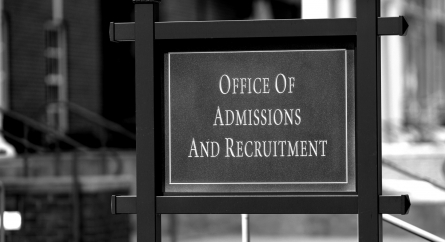Race-Conscious Student Selection Policies Continue to Garner Legal Scrutiny
In 2013, the United States Supreme Court issued a landmark decision in Fisher v. University of Texas at Austin (“Fisher I”) that established three controlling principles used to assess the legality of a higher education institution’s race-conscious practices. First, an institution cannot use race as a factor in conferring benefits or opportunities to individual students unless such practice can withstand “strict scrutiny,” which is a standard that requires an institution to show that its race-conscious practice is “narrowly tailored” to achieve a “compelling interest.” Second, while achieving the educational benefits that flow from student body diversity can constitute a compelling interest, an institution cannot impose a “fixed [racial] quota” or otherwise define “diversity” as some specified percentage of a particular group merely because of its race or ethnic origin. Third, in order to establish that its practice is “narrowly tailored,” the institution must demonstrate that any “available” and “workable” race-neutral alternatives would not be able to sufficiently promote its interest in educational diversity.
Since Fisher I, the operation and limits of these principles have continued to be challenged by groups adverse to race-conscious practices. A recent high-profile example includes the lawsuit filed against Harvard University by the group Students For Fair Admissions, in which it has been alleged that Harvard’s race-conscious admissions program unlawfully discriminates against Asian-American applicants, including by discounting their academic performance and assigning them lower “personal rating” scores. The three-week trial in that suit ended earlier this month, and it is expected that a decision will be issued not long after the Court hears post-trial arguments scheduled for February 2019.
Further, groups adverse to race-conscious practices continue to expand the scope of their challenges. For example, a newly-formed Texas-based organization called Faculty, Alumni and Students Opposed to Racial Preferences (FASORP) has, via lawsuits against the Harvard Law Review and NYU Law Review, recently challenged race-conscious practices implemented by student organizations outside of the admissions context. In those lawsuits, FASORP alleges that the law reviews illegally use their candidate and article selection programs to give preferential treatment to women and minorities, and that Harvard and NYU are in violation of federal anti-discrimination laws for allowing this preferential treatment to occur. The progress and resolution of these cases may have important implications for the future of race-conscious practices at higher education institutions. The Supreme Court has never addressed an institution’s use of such practices outside of the admissions context, so it is unclear how, if at all, the standards set forth in Fisher I and its progeny might be modified in such cases.
Client Tip: For the time being, race-conscious practices and policies of higher education institutions remain subject to the general Fisher I principles described above. Stay tuned for any relevant updates.
Categorized: Discrimination, Higher Education
Tagged In: Faculty Alumni and Students Opposed to Racial Preferences, Harvard Law Review, Harvard University, racial discrimination, racial quota, Students for Fair Admissions







